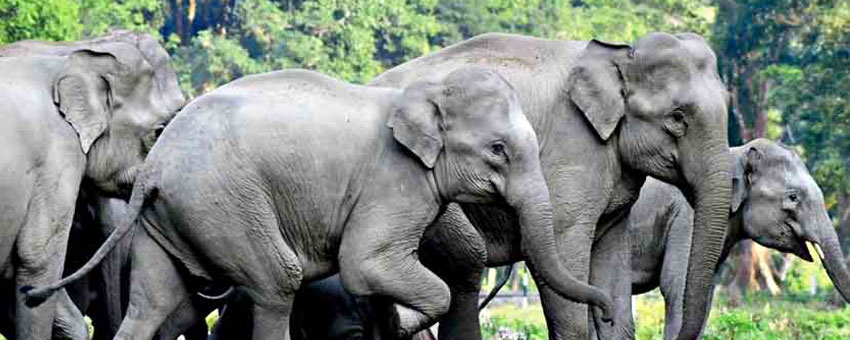Lesser-Known Facts About Gorumara National Park
By Tushar- [02-May-24] Gorumara National Park spans an area of approximately 80 square kilometers and is situated in the districts of Jalpaiguri and Alipurduar in West Bengal. It is nestled between the Teesta River in the east and the Murti River in the west with dense forests, grasslands and riverine habitats dominating its landscape. The park is home to a diverse array of wildlife including the iconic Indian rhinoceros, Indian elephants, Indian bison, leopards and various species of deer such as sambar and spotted deer. Additionally, Gorumara boasts a rich avian population with over 200 species of birds including hornbills, eagles and waterfowl.
Here are some lesser-known facts about Gorumara National Park:

Elephant Corridor in Gorumara National Park
The elephant corridor in Gorumara National Park is a crucial passage connecting the forested habitats of the Eastern Himalayas to the plains of West Bengal. Elephant corridors are vital for maintaining the genetic diversity and long-term survival of elephant populations. They allow elephants to migrate between fragmented habitats in search of food, water, and mates, thus preventing isolation and inbreeding. The elephant corridor in Gorumara National Park stretches across the forests of North Bengal, connecting the park to other protected areas such as Chapramari Wildlife Sanctuary and Jaldapara National Park. It serves as a vital link for elephants moving between the foothills of the Himalayas and the Terai grasslands. Indian elephants are migratory animals that undertake seasonal movements in search of resources. During the dry season, elephants from the hills descend to the plains in search of water and forage, using established corridors like the one in Gorumara National Park. Visitors to Gorumara National Park have the opportunity to learn about the importance of elephant corridors and observe these magnificent creatures in their natural habitat. Guided safaris and nature walks offer insights into the ecology and behavior of elephants, enhancing awareness and appreciation for their preservation.
Rhino Rehabilitation in Gorumara National Park
Gorumara National Park has been successful in the conservation and rehabilitation of Indian rhinoceroses. Once on the brink of extinction in this region, the rhino population has steadily increased due to concerted conservation efforts. Indian rhinoceroses, once abundant across the Indian subcontinent faced severe population declines due to habitat loss, poaching and human-wildlife conflict. Gorumara National Park along with other protected areas in the region became crucial for the conservation and rehabilitation of rhinos. Gorumara National Park initiated reintroduction programs aimed at translocating rhinos from other parks such as Kaziranga National Park in Assam where rhino populations were relatively stable. These translocations helped bolster the rhino population in Gorumara and diversify its genetic pool.
Exotic Wildlife & Jungle Safari in Gorumara National Park
Exploring the exotic wildlife and embarking on a thrilling jungle safari in Gorumara National Park is an unforgettable experience. Gorumara National Park is home to a diverse array of wildlife including some iconic and exotic species. Apart from the famous Indian rhinoceroses and Indian elephants, visitors may encounter Indian bison, leopards, sloth bears, sambar deer, barking deer, wild boar and various species of primates such as capped langurs and rhesus macaques. Birdwatchers will be delighted by the park's avian diversity with sightings of colorful birds like hornbills, pheasants, woodpeckers and waterfowl. The most exciting way to experience the wildlife of Gorumara National Park is through a Jeep Safari in Gorumara Park. Visitors can choose between thrilling jeep safaris or elephant safaris both offering unique perspectives of the park's wilderness. Led by experienced guides and naturalists, these safaris take visitors deep into the heart of the forest where they can observe animals in their natural habitats, learn about the park's ecology and capture stunning photographs.